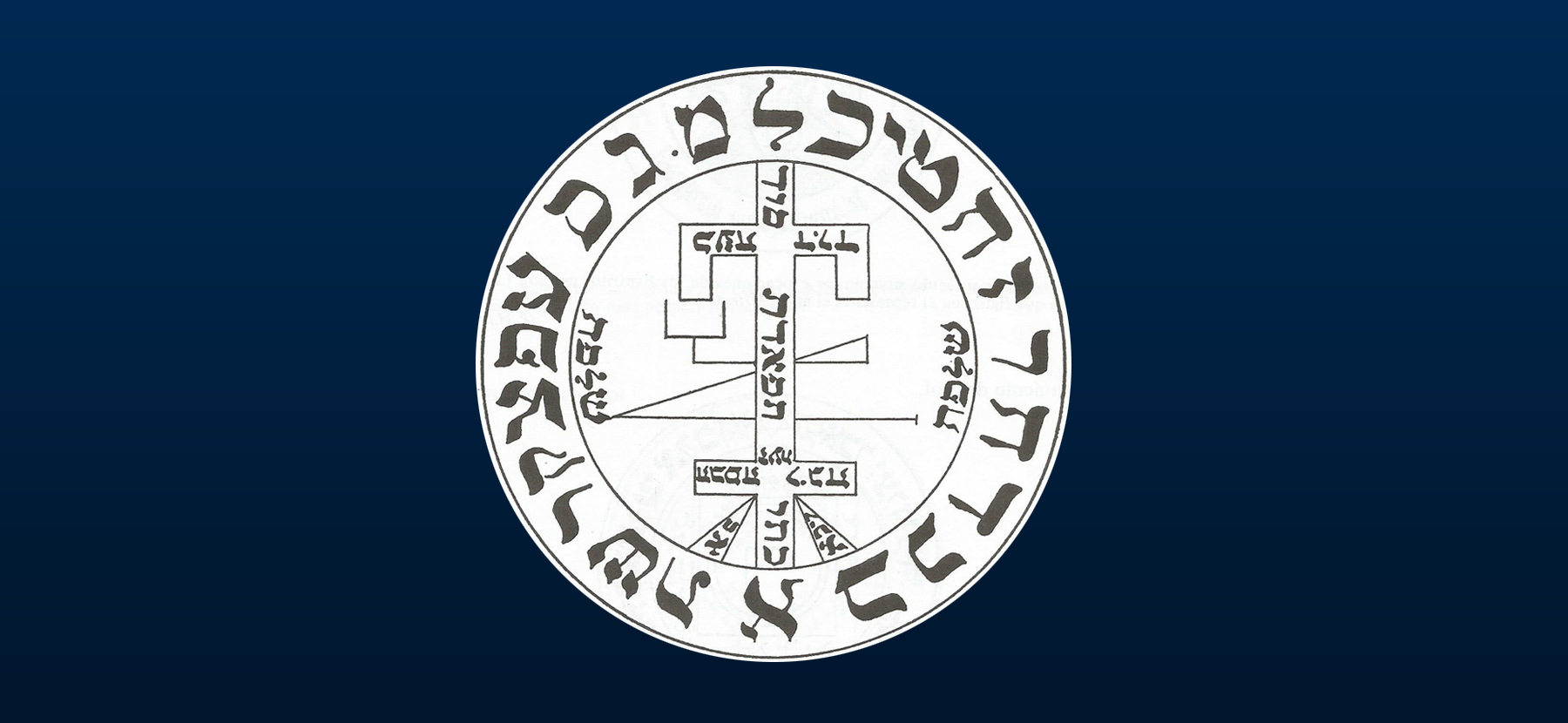The Pentacle Suite is based on a description of pentacles extracted from the Spanish version of the book “Formulaire de Haute Magic” written by P.V. Piobb The translation would go something like “High Magic Formulas Manual”.
Among the 7 pentacles described in the book, I selected:
– Sun Pentacle
– Mercury Pentacle
– Venus Pentacle
– Mars Pentacle
Sun Pentacle
There are several pentacles associated with the Sun. I chose this one as inspiration for the piece:
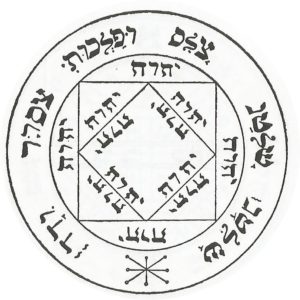
This pentacle procures realization in the form of power, glory and success in life. These characteristics are represented in the upbeat mood of the piece.
The Intro presents a rhythmic melody:
That is developed towards the end of the piece:
After the Intro, the Pentacle Suite’s main theme is presented:
As we will see later, this theme is present in Sun, Venus and Mars Pentacles.
After the development of the main theme, we reach a second part inspired by another Sun Pentacle:
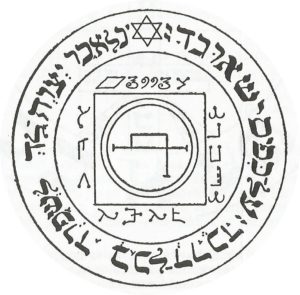
This pentacle is used in ceremonies in order to facilitate levitation. It also invokes the spirits who can transport you from one place to another, in a short time.
This time the song becomes ethereal, suggesting this altered immaterial state.
The third part of the piece features a polyrhythmic section where the quest for glory seems to emerge from the previous state of spiritual exaltation and carries on into the development of the initial theme.
The different ideas and motifs of the piece all come together in the final section of the piece:
Mercury Pentacle
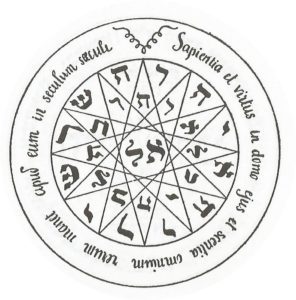
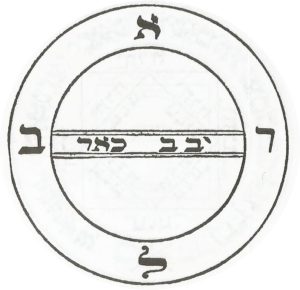
The mercury pentacles are associated with the attainment of psychic powers. My interpretation, is that through these pentacles, the magicians try to establish a balance between the spiritual and physical aspects of the being. Ultimately, finding a state of equilibrium and inner peace. This song is based on an ancient Sanskrit text from the Vedas, called Shanti Path. It is a mantra about reaching peace and harmony. Here’s the original text and its English translation:
Shanti Path
Asato ma sadgamaya
Tamaso ma jyotirgamaya
Mrityorma amritam gamaya
Saravesham svasti bhavatu
Saravesham shantir bhavatu
Saravesham purnam bhavatu
Saravesham mangalam bhavatu
Song of Peace (Shanti Path)
from the unreal lead me to the real
from the darkness lead me to light
from death lead me to immortality
may all beings dwell in happiness
may all beings dwell in peace
may all beings attain oneness
may all beings attain auspiciousness
may all happiness be unto the whole world
we worship the three eyed one (Shiva)
who is fragrant and who nourishes all beings
may he liberate us from death (ignorance, belief in
our transient nature) for the sake of immortality
(knowledge of our immortal nature)
even as the cucumber is severed from the vine
(that its seeds may be kept)
Ohmm the sound, the essential vibration of the
universe; shanti peace
This song carefully and slowly builds a climax, aiming to emulate the idea of transcendence through a state of inner peace.
One of the main themes, is taken from the initial melody presented in the Prologue:
First, the theme is presented by the flute:
And then, by the voice in the climax of the piece:
And a modified version of this theme:
Venus Pentacle
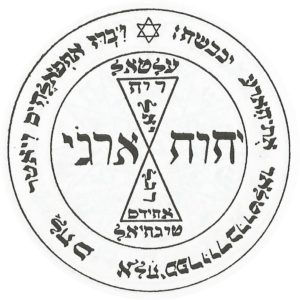
This pentacle is used to procure someone’s love. The arrangement of this song is quite peculiar: Piano, Flute, Cello and Mellotron. It features an extensive development of the Suite’s main theme and also the secondary theme presented in the Prologue and developed in Mercury Pentacle. Here are some interesting sections:
The Pentacle’s main theme is really a variation of the suite’s secondary theme:
This theme is developed until it is again presented this time un fugato mode between flute and cello:
That leads to the appearance of the mellotron and a second development section:
This long development section builds up slowly and, in the climax, the pentacle’s main theme is presented by the cello:
The piece concludes with yet a third development of the theme, with complex interplay between the piano, flute and cello, leading to Mars Pentacle.
Mars Pentacle
As is commonly known, Mars is the bringer of war. There are several Mars pentacles. They aim to protect against evil and help achieve victory in any kind of struggle. It is in this context – victory over struggles – that I chose the pentacle. Not its association with war.
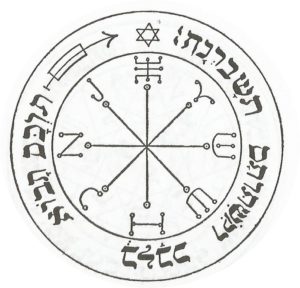
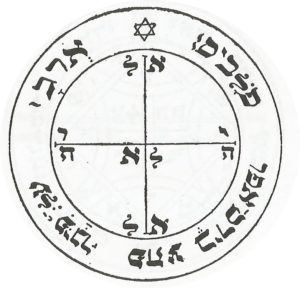
There is also a Mars pentacle that is used as a generic pentacle that can be used for any purpose if the specific pentacles are not available:
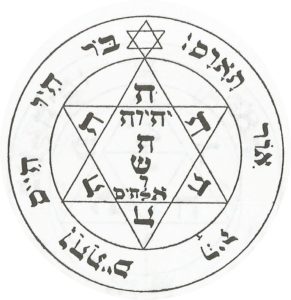
This piece is written entirely in 7/8, in order to represent the idea of struggle.
You can easily count the 7/8 measure by following the opening line in the bass:
After this bass introduction, the pentacle’s main theme is presented and immediately developed:
On the second section of the song, the upbeat of the first part gives way to a more relaxed atmosphere, always in 7/8. The piano presents a recursive pattern that flows effortlessly throughout the section, as the flute presents different melodies, inspired in the character of the motifs presented throughout the suite:
The final section presents for the last time the pentacle’s main theme before moving on to the Epilogue:
Epilogue
The final song of the Pentacle Suite is based on a poem from Nathalye Engelke:
Epílogo
Cuerpos de sal, arena simulada
en el vacío de tu mirada vuelve a caer
la misma angustia de no saber.
Dormido en una noche de alientos perdidos
de colores breves como tu historia
me dejo rendir
sobre las perlas de mi propia sed
Y son tus manos de verde infinito
paseantes de sueños
buscar una brisa de olivo
para sembrar el temblor en mi huella
frágil apoyo de un volcán vencido
Epilogue
Salt bodies, simulated sand
in the emptiness of your look,
the same not-knowing anguish
falls again.
Slept in a night of lost breaths
of brief colours, like your story,
I let myself go
over the pearls of my own thirst.
And your hands of infinite green
Are dream strollers
looking for a breeze of olive
to sow the tremor in my trace,
fragile support of a defeated volcano.
The piece has an altered song format:
Intro-A-A’-B-A’’-C-Outro (that is Intro-Verse-Verse’-Bridge-Verse’’-Verse/Bridge-Outro)
Intro is an instrumental passage where a modified version of the verse, is presented by the flute:
The verse is based on the first paragraph of the poem. The last phrase of the vocals, is used as the first phrase of the flute melody, that starts A’ – a modified and expanded version of A.
Here’s A and A’:
This is section B (Bridge), based on the second paragraph of the poem:
A’’ is an instrumental guitar solo, based on theme A (verse):
Part C, is really a combination of verse and chorus. The first 3 lines of the last paragraph are based on the verse, the last 2 lines, on the bridge:
The Outro is also a condensed version of verse and bridge, but instrumental and backwards. First, the guitar takes the bridge theme and hands the solo over to the flute, that takes the verse melody, to finish the song:
To finish this article, here’s a rare previously unreleased video of the Pentacle Suite. It was recorded in the 2007 edition of the Gouveia Art Rock Festival, when Carolina Prieto was still a member of Kotebel. It features an audio mix that has been prepared especially for this edition of Phaedrus.
Credits
Formulario de Alta Magia (Formulaire de Haute Magie) by P.V. Piobb.
© 1980 Editorial EDAF, S.A.
Jorge Juan, 30. 28001. Madrid
http://www.edaf.net
edaf@edaf.net
All pentacle illustrations where taken from this book.
Pentacle Suite © 2006 by Carlos G. Plaza Vegas. Distribution of the Pentacle Suite video is prohibited. It is intended for exclusive use of Phaedrus subscribers.

